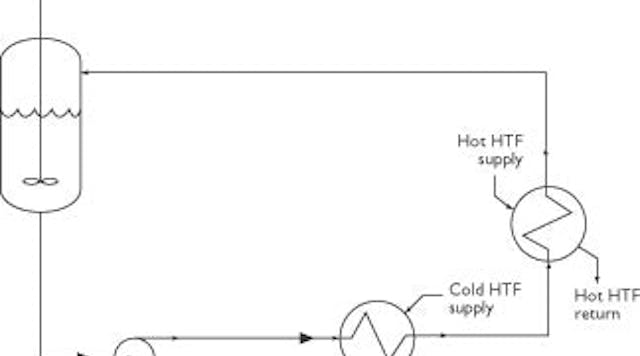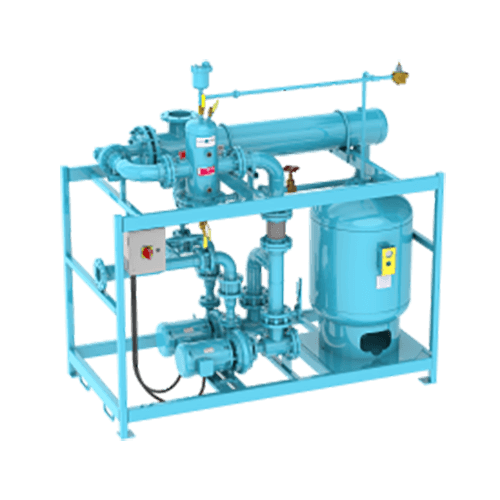DVS Heat Transfer Systems: A Definitive Guide to Smarter IoT Integration
Wiki Article
Technologies in Heat Transfer Systems: What You Required to Know for Optimal Efficiency
Advancements in Heat transfer systems are changing efficiency throughout different sectors. Advanced materials like graphene and nanofluids guarantee substantial enhancements in thermal conductivity. Meanwhile, the assimilation of IoT and machine understanding supplies chances for real-time tracking and boosted energy effectiveness. Nevertheless, the landscape of thermal administration is swiftly developing (DVS Heat Transfer Systems). Comprehending these growths is essential for attaining suitable system efficiency and sustainability in the future. What certain advancements are shaping this makeover?Arising Products for Improved Heat Transfer

Advanced Heat Exchanger Designs
While standard Heat exchangers have actually offered their function in numerous applications, advanced designs are currently arising to meet the increasing needs for performance and efficiency. These innovative layouts, such as plate, shell-and-tube, and finned-tube Heat exchangers, include enhanced surface area areas and improved flow patterns to raise thermal transfer rates. On top of that, compact styles allow for decreased space demands without endangering efficiency. Advanced products, such as composites and corrosion-resistant alloys, in addition improve resilience and efficiency under severe problems. Simulation modern technologies and computational fluid characteristics are significantly employed to fine-tune these styles, guaranteeing peak Heat transfer features. As sectors look for to lessen energy intake and make best use of output, the fostering of innovative Heat exchanger designs is critical in accomplishing these purposes.The Function of Nanotechnology in Heat Transfer
Nanotechnology plays an essential role in enhancing thermal conductivity within Heat transfer systems. By manipulating products at the nanoscale, scientists have actually accomplished considerable improvements in energy performance. These improvements not only maximize performance but additionally add to more lasting energy remedies.Enhanced Thermal Conductivity
Significant advancements in thermal conductivity have arised via the application of nanotechnology, changing Heat transfer systems across different industries. By integrating nanoparticles right into Heat transfer fluids and materials, researchers have accomplished remarkable increases in thermal conductivity. These nanoparticles, such as carbon nanotubes, graphene, and steel oxides, enhance the Heat transfer buildings because of their high area and one-of-a-kind thermal characteristics. The resulting compounds show enhanced performance in applications ranging from electronic devices cooling systems to renewable resource modern technologies. The ability to tailor the size, form, and make-up of nanoparticles allows for maximized thermal management solutions. Because of this, nanotechnology remains to play a crucial duty in the advancement of extra efficient and effective Heat transfer systems, leading the means for improved industrial applications.
Power Efficiency Improvements

Combination of IoT in Heat Transfer Equipments
The assimilation of IoT in Heat transfer systems presents the application of clever sensing units that enhance operational efficiency. These sensing units make it possible for real-time data monitoring, permitting instant changes and optimizations. This technological improvement has the potential to substantially improve performance and power administration in Heat transfer applications.Smart Sensors Execution
As Heat transfer systems advance, the assimilation of smart sensing units with the Web of other Things (IoT) has become a transformative technique. These sensing units make it possible for real-time surveillance of temperature, circulation, and pressure prices, boosting system effectiveness and dependability. By gathering and transferring data, they promote positive maintenance, reducing the danger of system failings. Additionally, clever sensing units add to energy financial savings by refining operational criteria based on environmental problems. Their ability to assess trends and abnormalities permits informed decision-making, ensuring peak efficiency of Heat transfer systems. As industries significantly adopt this technology, the application of wise sensors stands to transform how Heat transfer systems are managed, leading the way for higher sustainability and enhanced performance end results.Real-Time Data Surveillance
Exactly how can real-time data monitoring boost the performance of Heat transfer systems? By integrating Web of Things (IoT) innovation, Heat transfer systems can leverage constant information collection from wise sensing units. This real-time tracking enables instant evaluation of circulation, temperature level, and stress prices, making it possible for drivers to determine inefficiencies without delay. Consequently, changes can be made to optimize performance, lower power consumption, and expand tools life-span. Additionally, anticipating maintenance can be executed, lessening unforeseen downtime and pricey repairs. The capability to envision performance metrics through dashboards improves decision-making, cultivating an aggressive strategy to system management. Inevitably, real-time data keeping track of not only improves functional performance yet additionally contributes to sustainability objectives within industrial processes.Energy Effectiveness and Sustainability Trends
Energy efficiency and sustainability trends are reshaping the landscape of Heat transfer systems, driving innovation and compliance across different industries. Organizations are progressively prioritizing energy-efficient designs to reduce functional costs and minimize ecological impacts. The combination of renewable resource resources is ending up being extra common, making it possible for Heat transfer systems to operate sustainably while fulfilling regulative requirements. Furthermore, improvements in products and modern technologies advertise reduced power consumption and boost overall performance. Lifecycle analyses are also acquiring grip, allowing companies to assess the ecological effect of Heat transfer systems from production to disposal. This focus on sustainability not only sustains corporate duty yet likewise placements organizations competitively in a market where consumers progressively favor environmentally friendly solutions. Energy performance and sustainability remain crucial considerations for future advancements in Heat transfer modern technology.Innovations in Thermal Management Solutions
While the demand for reliable Heat transfer proceeds to rise, innovations in thermal administration services are arising to resolve both performance and sustainability difficulties. Advanced materials, such as stage modification materials and nanofluids, are being developed to boost Heat transfer effectiveness - DVS Heat Transfer Systems. These materials improve thermal conductivity and allow for better temperature level regulation in numerous applications. In addition, modern technologies like active thermal control systems are gaining traction, making it possible for real-time modifications to handle Heat flow successfully. These systems contribute to power financial savings and lower the environmental impact of thermal processes. The combination of IoT in thermal management promotes tracking and anticipating maintenance, ensuring optimized efficiency and durability of Heat transfer systems. On the whole, useful content these technologies represent substantial strides toward even more lasting thermal monitoring practicesFuture Instructions in Heat Transfer Technology
Emerging innovations in thermal administration options indicate an encouraging future for Heat transfer innovation. Scientists are progressively concentrating on creating materials with exceptional thermal conductivity and enhanced power performance. Innovations such as nanofluids, which have put on hold nanoparticles, supply significant renovations in Heat transfer performance. Furthermore, the integration of smart products that adjust to varying temperature level problems is getting traction, enabling for even more reliable and responsive systems. The surge of view it additive manufacturing strategies is additionally enabling the design of complicated Heat exchanger geometries that maximize liquid flow. The application of machine learning formulas is expected to change the optimization of Heat transfer systems, promoting anticipating upkeep and efficiency enhancement. Collectively, these innovations are poised to transform the landscape of Heat transfer modern technologies in numerous markets.
Frequently Asked Inquiries

How Do I Select the Right Heat Transfer System for My Application?
Choosing the best Heat transfer system involves examining application needs, including temperature arrays, liquid buildings, and performance demands. Assessing system kinds, upkeep considerations, and cost-effectiveness also plays an important duty in making an informed choice.What Are the Upkeep Requirements for Advanced Heat Exchangers?
Upkeep needs for sophisticated Heat exchangers normally consist of routine assessments, checking for leaks, cleaning of surface areas, and guaranteeing optimal circulation prices. Complying with manufacturer standards warranties efficient operation and prolongs the equipment's life-span.
Just How Do Environmental Variables Influence Heat Transfer Effectiveness?
Ecological aspects significantly influence Heat transfer efficiency. Variations in air flow, moisture, and temperature level impact thermal conductivity and convective Heat transfer, eventually affecting system performance and demanding consideration throughout the style and procedure of Heat transfer systems.What Security Standards Relate To Heat Transfer Solutions?
Security criteria for Heat transfer systems commonly include standards from organizations such as ASME and ASTM. DVS Heat Transfer Systems. These standards address materials, layout, and operational methods to ensure dependability, performance, and security against hazards in different applications
Just How Can I Repair Common Heat Transfer System Issues?
Fixing common Heat transfer system issues includes looking for leaks, making certain proper liquid circulation, checking insulation honesty, and verifying temperature differentials. Determining these factors can assist maintain system effectiveness and prevent additional complications.Nanotechnology plays an important function in enhancing thermal conductivity within Heat transfer systems. Significant advancements in thermal conductivity have actually emerged via the application of nanotechnology, revolutionizing Heat transfer systems across various industries. Developments in thermal conductivity through nanotechnology have paved the method for exceptional improvements in power efficiency within Heat transfer systems. Power performance and sustainability fads are reshaping the landscape of Heat transfer systems, driving innovation and compliance across numerous markets. The assimilation of IoT in thermal monitoring facilitates monitoring and predictive upkeep, making sure optimized efficiency and durability of Heat transfer systems.
Report this wiki page